There are those types who don’t really show their age. And certainly not their history. One example: the Opel Astra, which is celebrating two highlights this year. The sixth model generation will be launched at the end of the year – and then there is this wonderful birthday that we’re celebrating today: Happy 30th Birthday, dear Astra!
You don’t have to count, it really has been 30 years since Opel retired the predecessor Kadett. After six very successful generations, it was time for something new. After all, half the world was changing back then. The Scorpions were singing “Wind of Change” on the radio when the first Astra rolled off the assembly lines. First in Bochum, later also in Eisenach. West and East Germany were finally reunited, and Chancellor Kohl was even present in Eisenach at the start of production of the Astra. In 1991, thousands of visitors to the Frankfurt Motor Show crowded around the Opel stand. Everyone wanted to see the Astra family: hatchback, notchback and estate – the three celebrated their world premiere in silver metallic. The icing on the cake: a bright red Astra GSi.
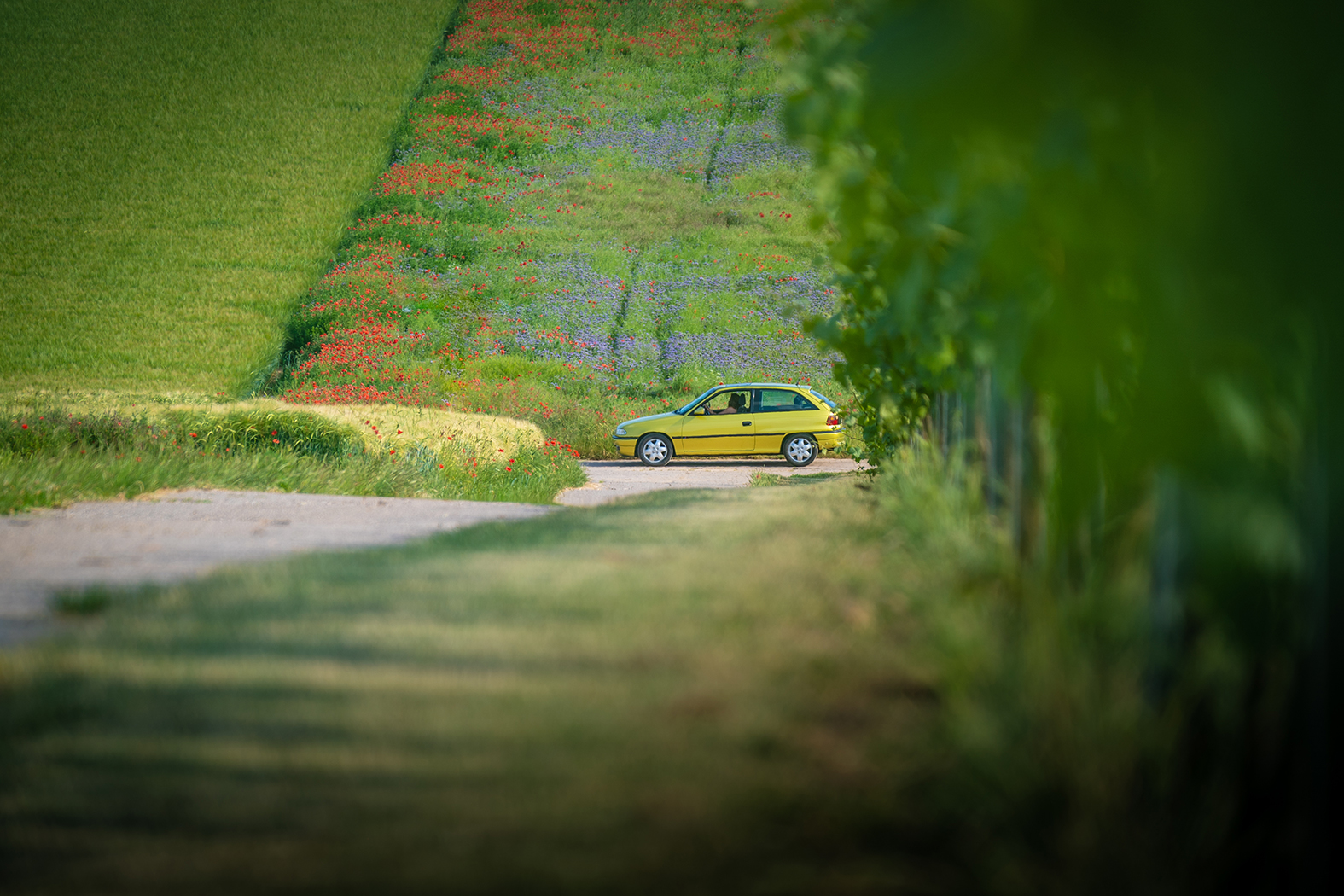
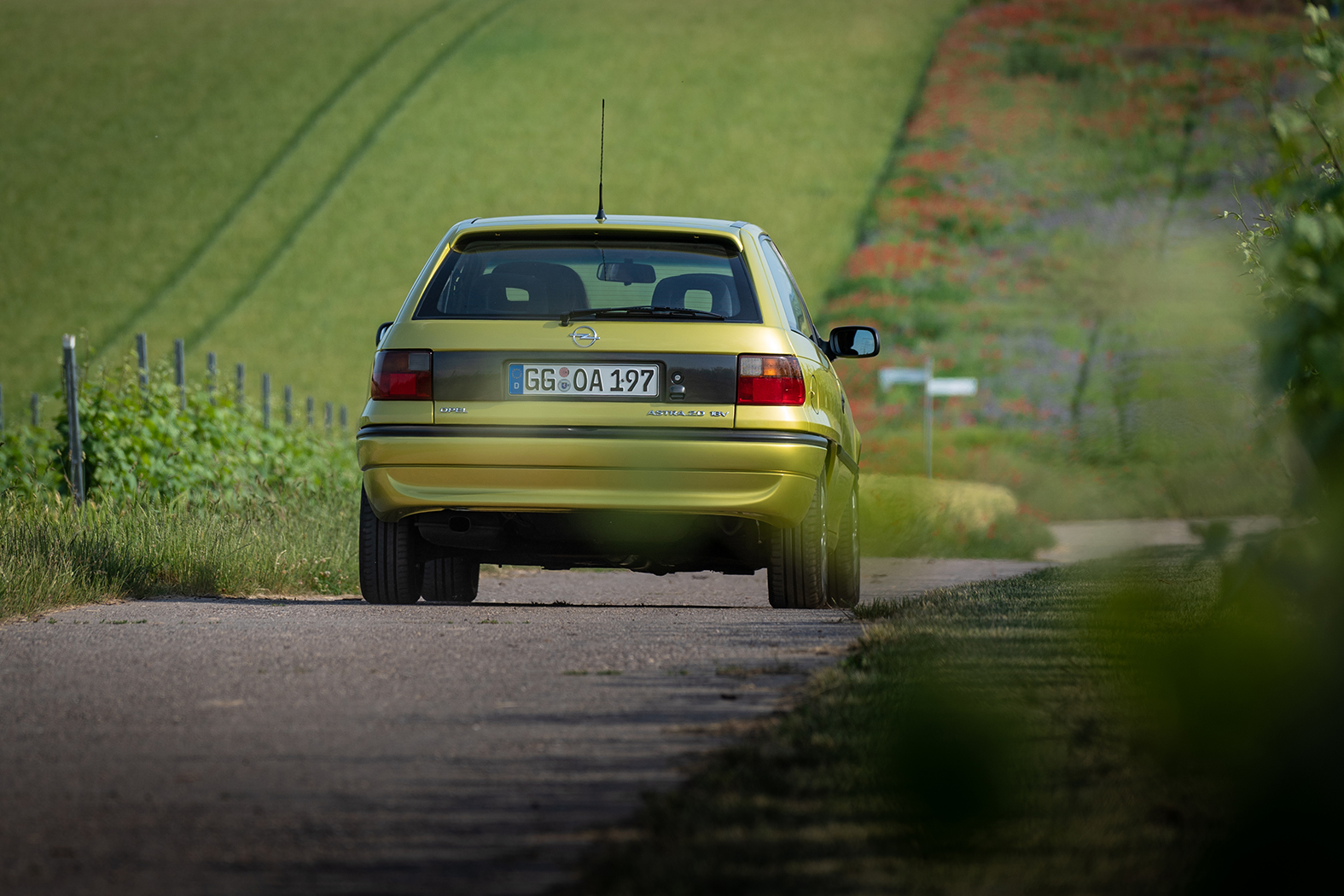
For its 30th birthday, we invite this Opel Astra F from the Opel Classic collection in Rüsselsheim for a trip.
Unreal but true: The first Astra
can carry H-plates
The tears of Kadett fans dried as quickly as the ink on the first sales contracts. In October 1991, the two and four-door hatchback versions of the Astra, the estate and the GSi were in dealers‘ showrooms; the notchback limousine followed in spring 1992. One year later, Bertone refined the Astra into a convertible. With a large fabric soft-top – without a bar.
New name, old goals: the Astra was to overtake the Golf and lead the compact class. How? With a generous sense of spaciousness, new safety systems and economical engines. The car was well received, sales figures exploded. After six years, Opel counted 4.13 million sales contracts, making the Astra F the bestselling Opel model – the record still stands today. The estate version even overtook the Golf: from 1993 to 2000, the Astra Caravan was the bestselling compact estate.
Opel always had a big heart for friends of large luggage compartments
The Caravan was also available with the 150 hp GSi engine. Its drivers must have greatly enjoyed it when they could annoy estate models like the BMW Dreier Touring or Audi Avant with their Astra. Enough looking back, time to celebrate. To do so, we drive an Astra F out of the Opel collection for an exclusive birthday tour. The baroque-yellow hatchback has not even covered 17,000 kilometres yet, and the interior still exudes that wonderful new-car scent.
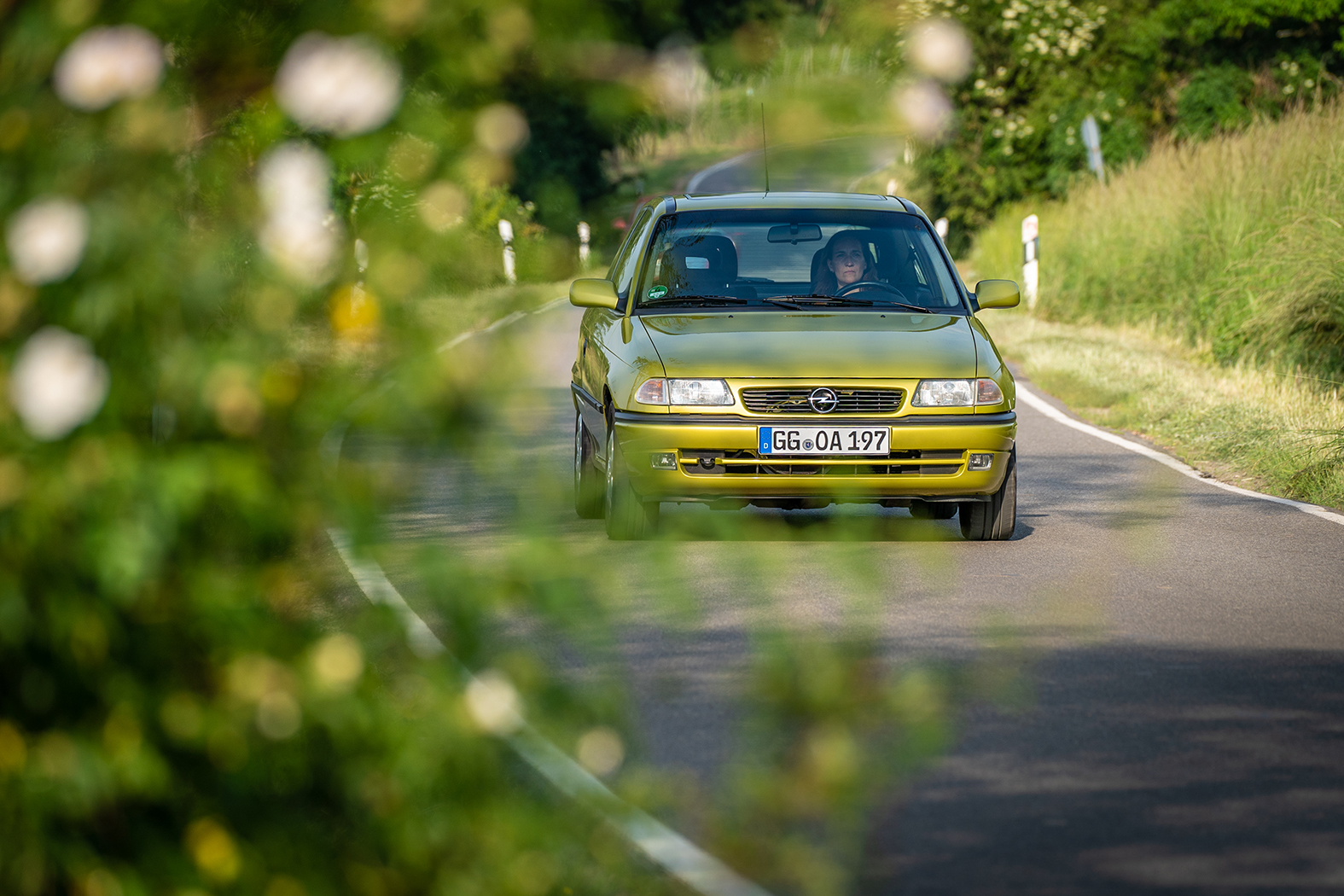
Lots of space, new safety concepts and economical engines: the overall package of the Opel Astra was well received – to this day, it is the most built Opel ever.

Facts about
the Astra F
ASTRA
The name came from Vauxhall. Because that was already the name of the Kadett in Great Britain.
SPACE
Compared to the Kadett E, the windscreen is 74 millimetres further forward and legroom was increased by up to 50 millimetres. The drag coefficient of the Astra F is 0.30.
ENGINES
In Germany, the compact car was launched with five petrol engines (1.4, 1.6, 1.8 and 2.0 litres) and one diesel engine (1.7 l).
SAFETY
The “Opel Safety System” includes double-tube reinforcements in the doors. Special seat ramps prevent “diving away” under the seatbelt, and seatbelt tensioners safely secure the body. From 1994, airbags for driver and front passenger were standard.
SUCCESSOR
From 1998, the Astra G took over.

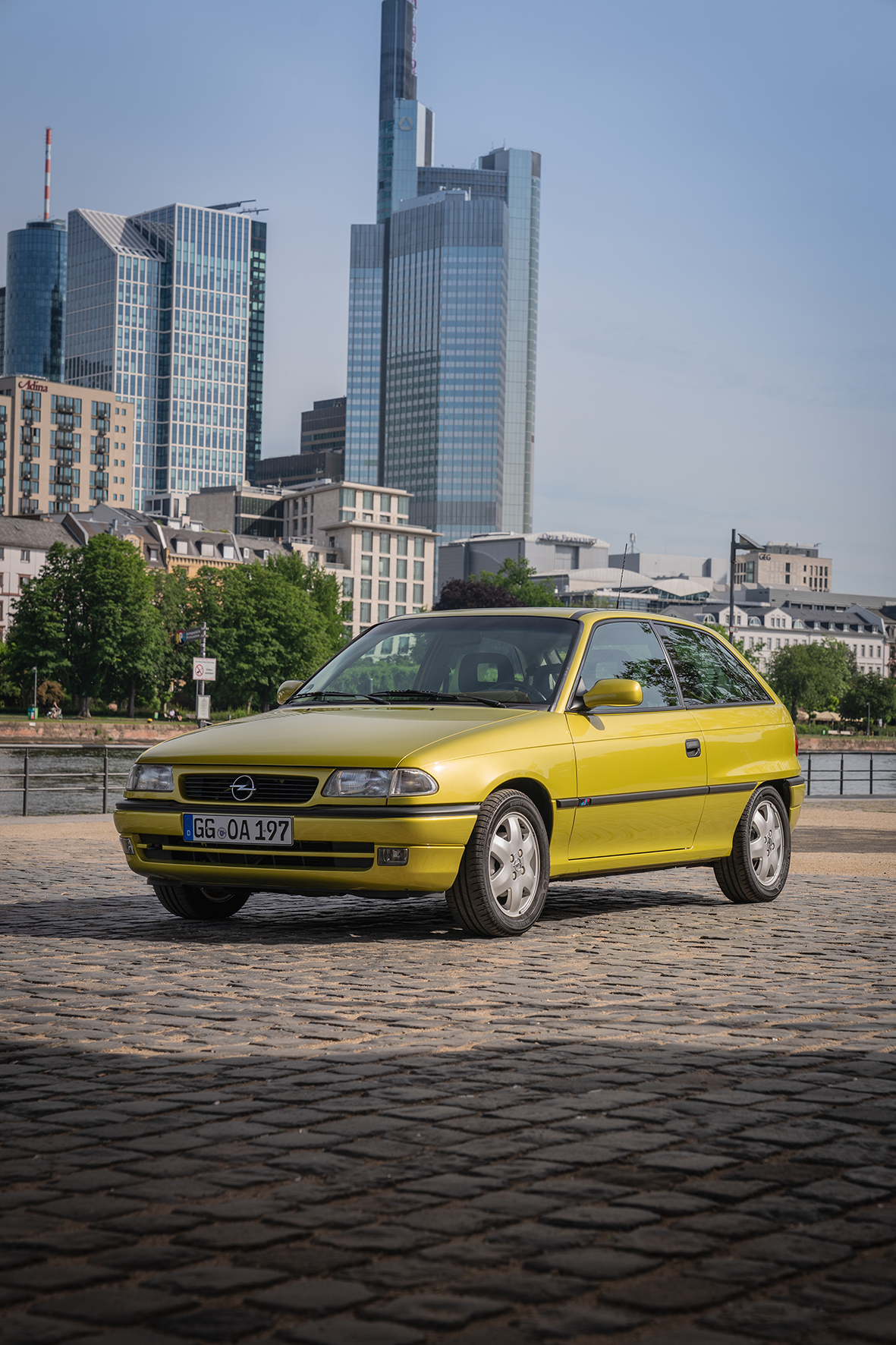
At the petrol station, a pump attendant tells us that he once had one in the same colour: “It was a loyal companion.” Would he be allowed to sit in this one for a moment, for old times‘ sake? Sure! “How clear the cockpit was,” he marvels. That’s right. Where today XL screens are enthroned, in the first Astra a “multi-info display” provided information – more discreet than any smartphone. In the early 1990s, it was one of the first displays to combine radio, on-board computer and control information so that the driver had everything in view. By the way, “everything” means five items of information …
The Astra is also a pioneer with and behind the instrument panel: large parts of it (as well as the interior trim, the seats and the centre console) are made of polypropylene – for which Opel had once developed an innovative, resource-saving recycling process. And behind the instrument panel? There, a system effectively filters pollen and dirt particles from the fresh air. Today the filter is off duty. We turn off the air conditioning, lower the windows and open the sunroof. Off we go to Frankfurt to breathe in the big world. The first Astra also had experience with this – as a global car, it was available on five continents via the GM network.

The Astra manoeuvres effortlessly through city traffic – including fantastic views of the skyline.
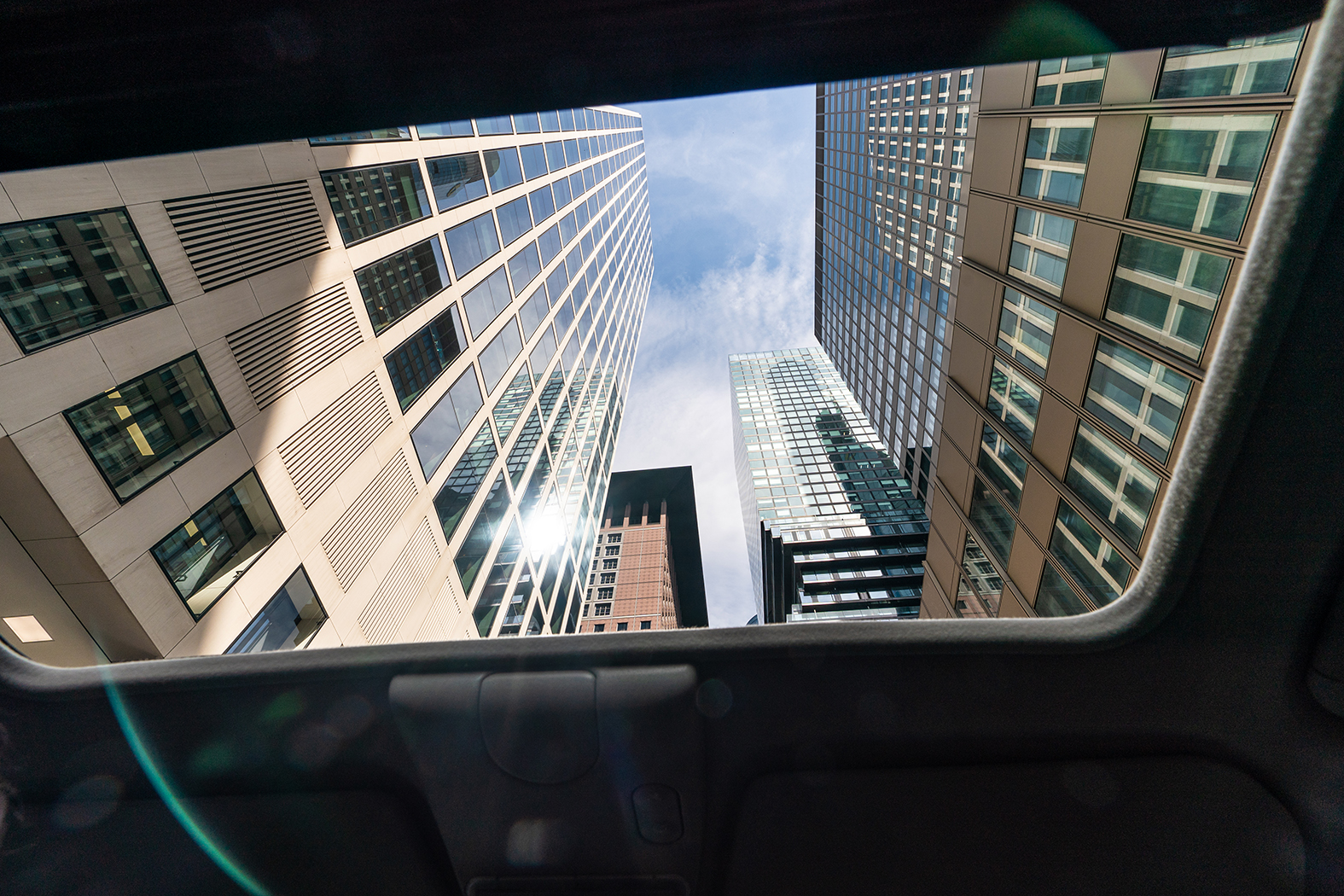
Very good overview,
harmonious drive
What is striking in dense city traffic: how clearly the compact hatchback is built. All corners are easy to see. What’s more, there is no trace of oldie-ness or shaky behaviour. The Astra floats along light-footedly, sometimes jumps into small gaps, can be steered well, brakes precisely and is always comfortable. The appropriate entertainment is not provided by audio streaming, but by a two-litre four-cylinder engine. The 16-valve engine delivers 136 hp – which doesn’t sound like much, but it’s more fun than many turbocharged engines. After all, we are no longer used to being able to use the full rev range of a petrol engine.
Opel also had the subject of alternative fuels on its radar very early on: in 1996, for example, a limited series of the Astra Caravan with natural gas drive was launched. Utility companies, public authorities and fleet operators tested the 500 vehicles in everyday use.
Electric drive was
also already a topic
With the Astra Impuls III, the brand conducted the first large-scale electric car test in its history from 1993 to 1997. Ten electric Astra Impuls cars covered a total of 350,000 test kilometres on the Baltic Island of Rügen. Out of Frankfurt, into the rolling hills of wine country. The Astra surfs over winding roads and beams us back to the time when normal cars did not have to have suspension like sports cars, were not mobile computers. It’s a pity, in any case, that there are only a few Astra Fs left on the road or in the used car exchanges. In this respect, the 30 years are noticeable.
August 2021
